The elections have put Myanmar in the news lately and I was reminded of the one view that is the archetypal Burmese scene: pagodas of Bagan at sunset. This was one destination we had in our sights on a visit to the country in March.
Myanmar – or Burma – turns out to be a very long way away. It is a 10½-hour flight from London Heathrow to Bangkok and then a short hop back west again to Yangon – Rangoon that was.
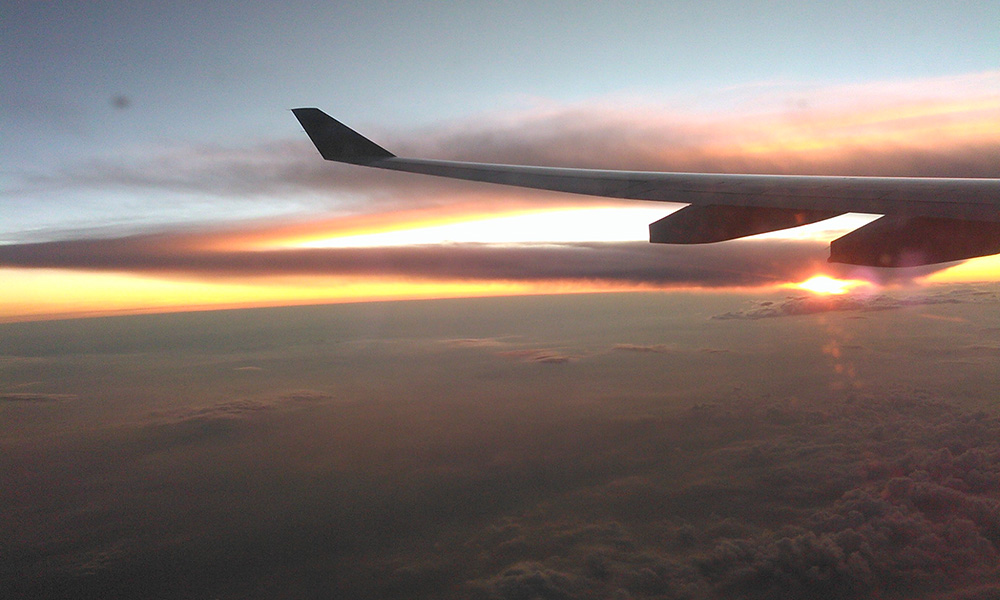 |
| A strange v-shaped pall of brick-coloured cloud appeared to eminate from Yangon. Lots of big cities - including London - fly these flags of pollution |
We spent a few days exploring the city and then rode on the train from the crowded but earily quiet central station at Yangon to Mandalay where we took in important sights including the Museum of the Nether Garment of King Mindon. We ascended the 1729 steps to the top of the granite lump that is the Mandalay Hill by way of one shrine containing a life-sized model of some sinner having his entrails picked out by vultures and I found myself pondering on the various means of repressing ordinary people. Then, after a few days, at dawn, we boarded the RV Shwe Keinnery. This was a vessel with a four-foot draught that offered tourists a “spacious sundeck for taking relax and sunburn.”
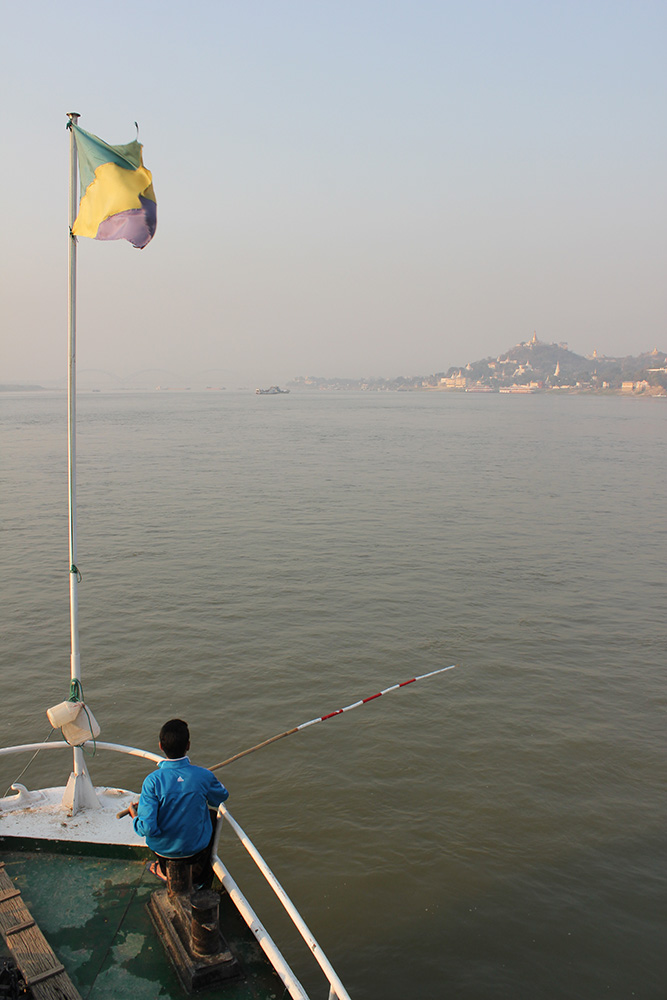
March is dry season so the Ayeyarwady (aka Irrawaddy) River was low. A couple of men were stationed up near the prow of the boat who used long sticks to gauge the water depth and shout it back to the captain. Our progress was meanderous, 13 knots, following the winding deepest course of the river; the 9½-hour scheduled journey actually took 12. The crew acted as if they should be seen and not heard, but perhaps language kept us separate.
Despite the limitations of low water though the Irrawaddy was clearly a major artery of supply – tugs pulled tankers bringing timber and coal south, and heading north were shipments of road diggers and many other bulky commodities, some of which – fuel oil presumably – were perpetually sprinkled with river water to keep them cool. We passed flotillas of cormorants and innumerable fart-farting slender fishing vessels crewed by fathers and sons. The Irrawaddy used to boast its own species of blind river dolphin – all of the world’s great rivers have them – but the pollution made me feel pessimistic that any survive.
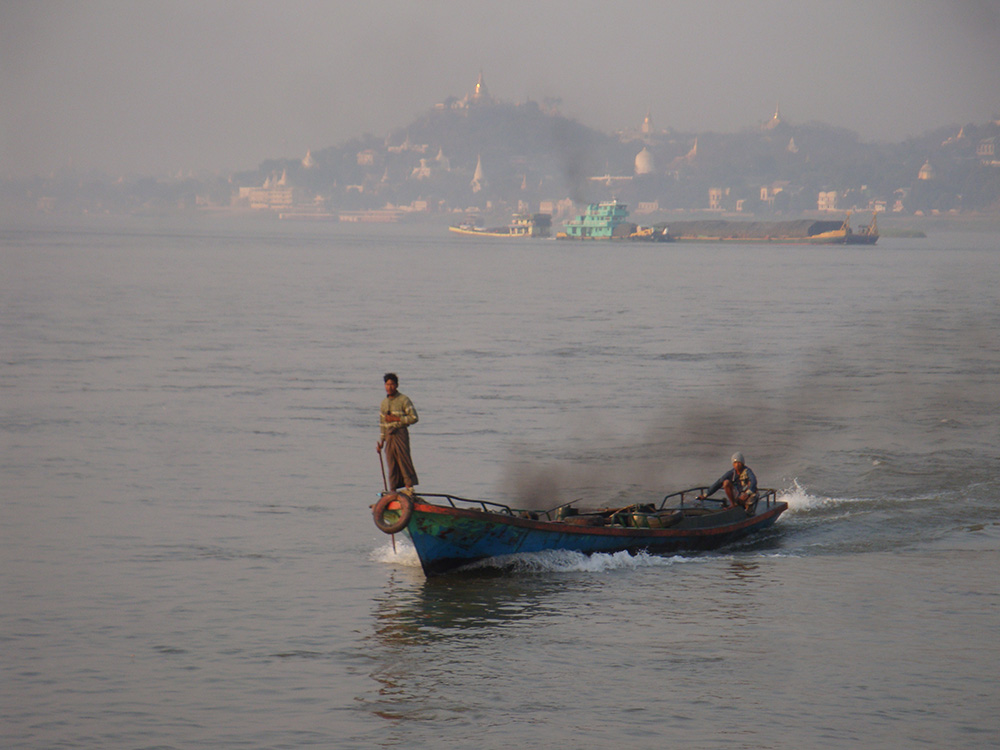
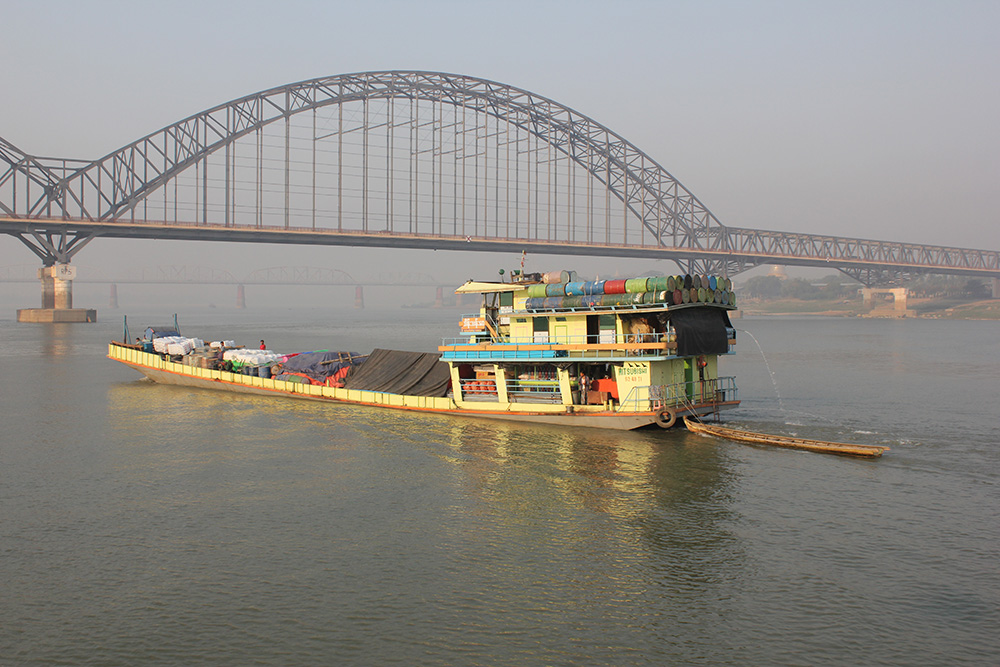
By the time the sun was setting we had indeed taken a good relax and were perhaps a little sunburned. We chugged beneath a solid stumpy dome that in Nepal I would have called a stupa or a chorten, but here was called a pagoda. We docked and disembarked as hundreds of squawking flying foxes were stirring ready to go on a night of fruit foraging. We found a taxi to take us into Bagan (aka Pagan). Over diner there was a puppet show. This included a traditional story about a magician who turned pieces of fruit into young girls “with whom” we were told “he liked to deviate”.
Our hotel looked out across the Irrawaddy and would prove a luxurious base to cycle out and enjoy the pagodas. The plains are dry and dusty. Spindly acacia trees offered little shade. The weather was hot and the ground sandy so encouraged a rather sedate pace of perambulation – sometimes the sand was so deep we ended up pushing the bikes through but it was a great way to explore, and being a tourist trap, there were plenty of places to stop, wash down the dust and rehydrate with coconut milk. People were respectful, quiet, but communication seldom progressed much beyond exchanges of greeting - which sounds something like "mingle about". Instead of chatting then we enjoying comedy shows put on by gambolling palm squirrels, kleptomaniac white-throated babblers or squabbling mynahs.
It soon became apparent that there were a lot of stupas but it was not until we climbed to the top of the first big one that the scale of the ancient building efforts was revealed. There are over two thousand surviving monuments. Many are huge, and most are beautifully decorated with gorgeous artwork inside. They are made with red-baked brick; some are stuccoed. Some have been clumsily reconstructed. Almost invariably searching around and inside, revealed delightful figures and images – of the Buddha, various devotees, devils, bodhisattvas, animals, flowers or pleasing geometric designs some in sumptuous colours.
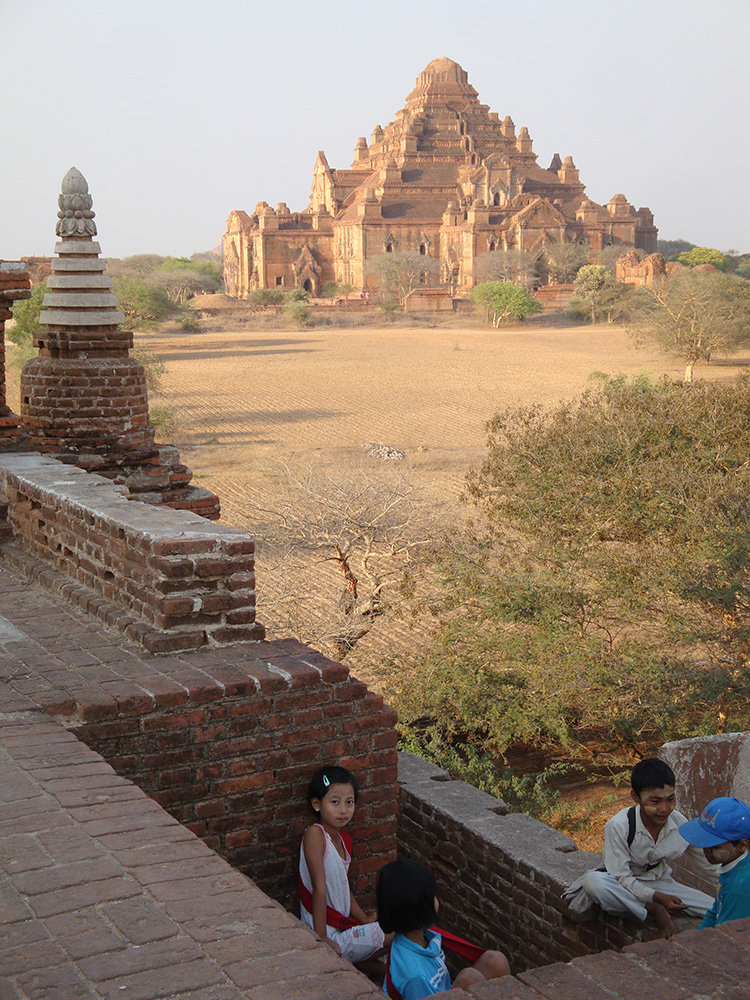
Bagan probably began as long ago as the mid-9
th century but building of the capital didn’t begin until the mid-11th century as “the first Burmese Buddhist civilisation” (according to Paul Strachan, author of
Pagan: art & architecture of old Burma; Kiscadale, 1996) and the kings were in touch with other monarchs in Sri Lanka and India.
Guide books, local guides and tourists themselves debate the very best monument to mount as the sun is sinking to get the best photo of the panorama of pagodas. One is even called the sunset pagoda. Each dusk there was a frenzy of taxis, tourist buses, private cars, horse-drawn carts and little motorbikes racing around the countryside churning up clouds of yellow dust all racing to the very best photo-point. Fortunately which was the best pagoda was still under debate. And actually the best views are at dawn when few people are about.
We joined in the hunt for the most photogenic angle and on our last evening in Bagan positioned ourselves precariously high up on the decorated dome of Thabeik Hmauk or the “Boycott Temple”. From there we could look out across the dusty, pagoda-dotted plain, trace yet more tourist taxis and buses each with its attendant pall of dust and gaze admiringly at the immense scale of building achievement. It had happened thanks to dynasties of despots known for immense cruelty and an obsession with immortalising themselves in brick. Yet no-one seemed to live there then and no-one lives there now.
I found myself thinking about the craziness of the Easter Island sculptors who competed to build more and more immense stone figures and in so doing deforested their island and in their struggle to survive starvation turned to cannibalism. They couldn’t even escape the island as they no longer had the wood to build boats and flee. S quoted from Shelley’s poem, Ozymandias, about the tyrant who called himself Ramses the Great, King of Kings and challenged visitors to
“Look on my works, ye Mighty, and despair!”
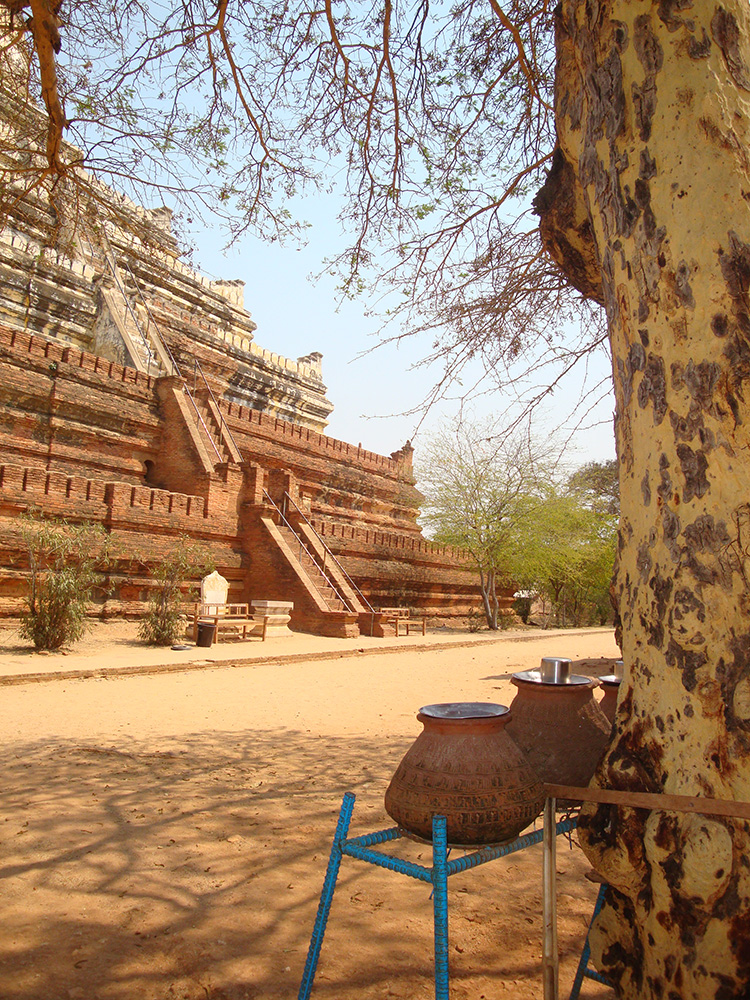
The ancient 230-year-long building frenzy in Bagan would have created employment although this was at a significant social cost. The colossal but unfinished Dhammayangyi Pahto may have been built by King Narathu to atone for smothering his father on his death-bed as well as his brother and executing his Hindu princess wife. The king was said to have stipulated that the mortarless brickwork should fit together so snugly that a pin could not be passed between any two bricks. Workers who failed to meet this standard had their arms amputated. Despite the violent past though, the Bagan Plain was now magnificent in its tranquillity. Strachan waxes lyrical about “the steeply climbing, horizontal bands of the terraces [which] are dominant lines, rising in a crescendo, like the last movement of a thunderous symphony.” Perhaps he was right. From Thabeik Hmauk, views of the pagodas – small and large, complex and simple, stepped and smooth, pointy and stumpy, golden and whitewashed, pyramidal and breast-shaped – in the orange light of the setting sun was as moving as any mighty symphony.
Meanwhile in Yangon, there were pro-democracy riots going on.
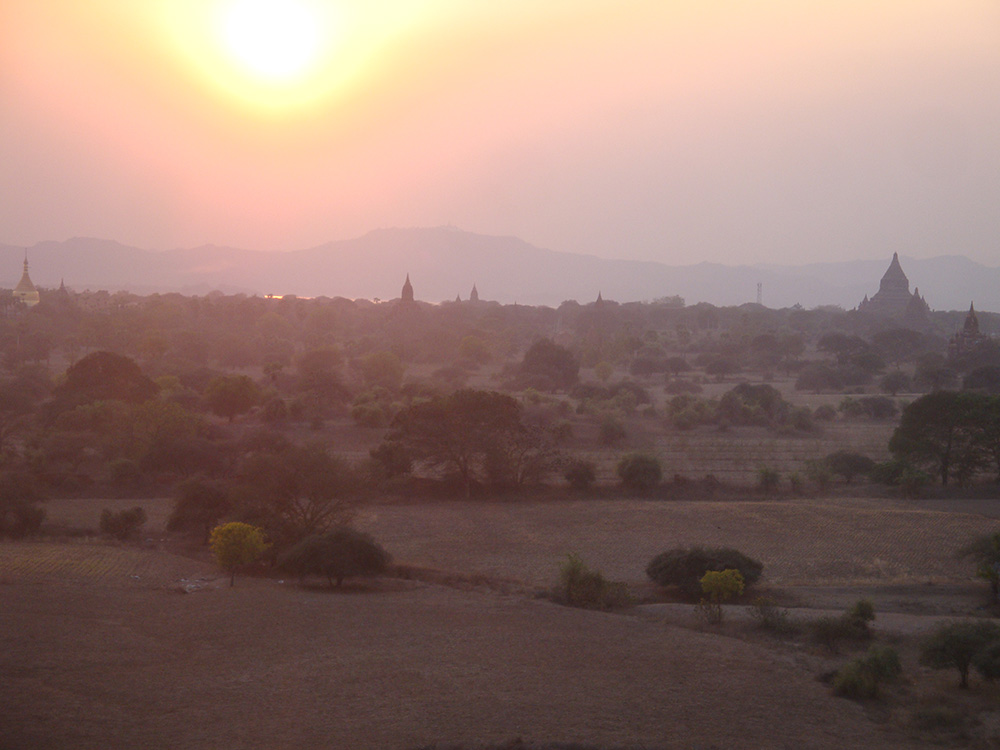 |
| The pagoda-dotted plain with the Ayeyarwady River in the distance |
Previous blogs (two posted in March and one in May 2015) describe other parts of our exploration of Myanmar part of which was published in the Bradt anthology called
To Oldly Go this autumn.